Manuscript AM 748 I 4to
Finnur Jónsson's facsimile edition, 1896
HOME
This fragmentary manuscript, commonly refered to as A, is dated circa 1300, or the first quarter of the 14th century. It contains variant texts of five Eddaic poems, otherwise preserved in the Codex Regius, and the only extant text of Baldrs draumar. Only six sheets of the manuscript have survived. The A manuscript contains: |
page 1 recto, Hárbarðsljóð 19:7 - 44:1
page 1 verso Hárbarðsljóð 44:2 - Baldrs draumar 8:4
page 2 recto Baldrs draumar 8:4 - Skírnismál 10:4
page 2 verso Skírnismál 10:4 - 27
page 3 recto Vafþrúðnismál 20:2 - 41
page 3 verso Vafþrúðnismál 42 - Grímnismál prose introduction
page 4 recto Grímnismál prose introduction - 10:1
page 4 verso Grímnismál 10:1 - 27:8
page 5 recto Grímnismál 27:9 - 44:2
page 5 verso Grímnismál 44:2 - Hymiskviða 4:1
page 6 recto Hymiskviða 4:1 - 22:8
page 6 verso Hymiskviða 22:8 - Völundarkviða prose introduction
Excerpt from:
Terry Gunnell, "Eddic Poetry: The Main Manuscripts" in A Companion to Old Norse-Icelandic Literature and Culture, edited by Rory McTurk, 2005.
"Very little is known about the origin and early history of either the Codex Regius or the fragmentary AM 748 4to manuscript, the later being another, relatively small collection of mythological poems, which is nowadays retained in Denmark and is believed to have been written shortly after the Codex Regius in c. 1300 (for this manuscript, see Wessén 1945). To judge from the small size of these manuscripts and the economical use they make of space, neither was judged by the people of the time as being as important as, for example, the Möðruvallabók and Flayeyjarbók manuscripts of the sagas, or the Stjórn manuscript of part of the Bible. What is certain is that the Codex Regius was in the possession of Brynjólfur Sveinsson, bishop of the Skálholt diocese in southern Iceland in 1643. We also know that Brynjólfur sent it as a gift to the king of Denmark in 1662. It is conceivable that Brynjólfur was sent the manuscript by the Icelandic poet Hallgrímur Pétursson, who had been living in Suðurnes, near Reykjavík (see Karlsson 2000: 252).
...The AM 748 manuscript (in which there is no sign of a heroic poem) perhaps has as its background an early mythological collection of the kind Snorri Sturlson might have had in front of him."
 Recto 1 |
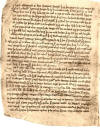 Verso 1 |
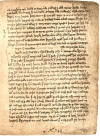 Recto 2 |
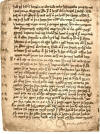 Verso 2 |
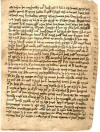 Recto 3 |
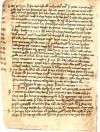 Verso 3 |
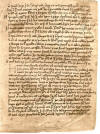 Recto 4 |
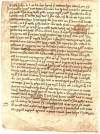 Verso 4 |
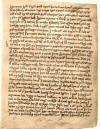 Recto 5 |
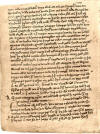 Verso 5 |
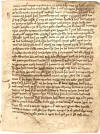 Recto 6 |
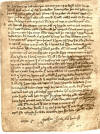 Verso 6 |
in the Arni Magnusson Collection, 1896.
In the year 1691, the manuscript was presented as a gift to Arni Magnusson, and probably came into his possession shortly afterwards. He got it from Bœr in Floe; for this reason, he assumed (see the note in Catalog II, 174) that it had previously been in Bishop Brynjölfr Sveinsson's possession. It is certainly a correct conclusion. Where Bishop Brynjölfr got it, on the other hand, is less certain. Of the various names of people beginning with "Mr. Sigurdur", and some names of farms that are found in the margin, among others on page 15r, one has concluded (Snorra Edda III, p. LX1X) that the manuscript came from the area around Borgarfjorden; The aforementioned "Mr. Sigurd" is probably Sigurd Jónsson at Einarsnes (died. 1677). It is not possible to trace it back further in time; To assume that the manuscript was created in the Borgarfjord, is too bold…. The age of the manuscript is unanimously set to 1300 AD; It would be more satisfying to put it on the first quarter of the 14th century. The entire nature of the manuscript, its spelling mainly, leaves no doubt about this. Compare Bugge in his Foreword p. XX-XXI. Nor can it be doubted that the mss was written by an Icelander, due to the tendency of the scribe frequently to write æ - (an apparent Norwegian tendency) for the usual e.
In AM 435 a 4to pp. 93v-95r , Arne Magnusson announces AM 748 II 4to and MS 748 I, 4to, the eddic fragment in which the poem Baldrs draumar appears. ….On the outside of this vellum (pergament) leaf is written: "Arna Magnusson, on behalf of Copenhagen, 1691."